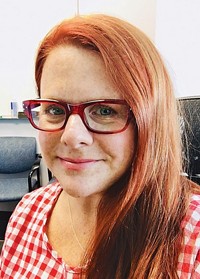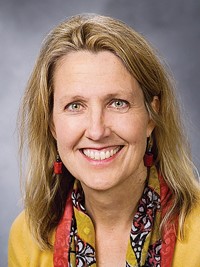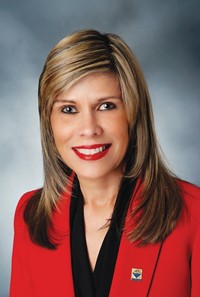Advertisement
Grab your lab coat. Let's get started
Welcome!
Welcome!
Create an account below to get 6 C&EN articles per month, receive newsletters and more - all free.
It seems this is your first time logging in online. Please enter the following information to continue.
As an ACS member you automatically get access to this site. All we need is few more details to create your reading experience.
Not you? Sign in with a different account.
Not you? Sign in with a different account.
ERROR 1
ERROR 1
ERROR 2
ERROR 2
ERROR 2
ERROR 2
ERROR 2
Password and Confirm password must match.
If you have an ACS member number, please enter it here so we can link this account to your membership. (optional)
ERROR 2
ACS values your privacy. By submitting your information, you are gaining access to C&EN and subscribing to our weekly newsletter. We use the information you provide to make your reading experience better, and we will never sell your data to third party members.
Education
The American Chemical Society And Its Spanish Resources
by Ingrid Montes, ACS Director-At-Large
November 16, 2015
| A version of this story appeared in
Volume 93, Issue 45
According to the Cervantes Institute, Spanish is the mother tongue of nearly 470 million people. About another 90 million people worldwide speak Spanish as a second language, making it the world’s fourth-most spoken language after Chinese, English, and Hindi.
Perhaps most remarkable, the U.S. now has more Spanish speakers than Spain itself. In all, about 53 million Americans can speak this romance language. Only Mexico with 121 million Spanish speakers has more. And we are closing in quickly. In fact, projections suggest that by 2050 the U.S. will have 138 million Spanish speakers, which would make it the largest Spanish-speaking nation on Earth.
So what are the implications of this trend as we strive as scientists, engineers, and educators to advance the broader chemistry enterprise and its practitioners for the benefit of Earth and its people? And what kinds of ACS resources are available that could help meet the growing needs, priorities, and interests of Hispanic members, prospective members, and chemistry’s global community?
The society has taken steps to capitalize on the fact that communicating chemistry has increasingly become an online endeavor. Spanish is the third-most widely used language on the Internet, so it is vital for us to have an online Spanish-language presence.
More broadly, ACS has developed and refined its Spanish-language and Spanish-speaker-serving products and activities for chemical scientists, engineers, educators, and students. We can and should enhance and leverage these capacities:
◾ increasing the Spanish-speaking public’s awareness, interest, and appreciation for chemistry;
◾ providing Spanish-speaking teaching and learning communities with resources, tools, and techniques for effective instruction of chemistry and related disciplines;
◾ fostering collaborations among Spanish-speaking scientists, engineers, and educators; and
◾ promoting better understanding of the experiences of Spanish-speaking members within ACS and their expectations of ACS as a professional society.
Through Celebrando la Química, the publication of National Chemistry Week and Chemists Celebrate Earth Day, ACS is supporting the Spanish-speaking public’s awareness, interest, and appreciation for chemistry. As I mentioned in a Comment earlier this year, the ACS Festival Series has been taking place for 10 years as organized by the ACS Puerto Rico Section.
Since 2010, there has been considerable effort to extend the festival model to other nations in Latin America, and we have had festivals in Colombia, Peru, Chile, and Mexico. In 2014 alone, we reached out to more than 14,000 people. At these events, volunteers encourage students, teachers, and parents to participate in demonstrations related to different areas of chemistry. As a result, the public is introduced to various chemistry concepts through the use of familiar substances.
Right now, ACS resources are available at all levels for Spanish-speaking teachers and learning communities to foster effective instruction of chemistry and related disciplines:
◾ Elementary: Ciencia para Chicos
◾ High school: ChemMatters (one article per issue has been translated into Spanish)
◾ Undergraduate: College to Career (type “carreras” in the search engine for Spanish-language explanations of chemistry careers)
◾ Postgraduate: Educación Posgrado US
◾ Safety manual: “Seguridad en los Laboratorios Químicos Académicos”
In addition, C&EN, in collaboration with Divúlgame, an organization based in Spain, provides Spanish translations of some of its content on the Web. This enhancement makes cutting-edge science news more accessible to the Spanish-speaking chemistry community worldwide.
Thanks to ACS Immediate Past-President Tom Barton, the society is also now producing webinars in Spanish. Each year there are four webinars, offered by ACS in collaboration with the Sociedad Química de México (SQM). I have had the good fortune to work with SQM President Lena Ruiz Azuara to organize and curate the Spanish-Language Webinars Series with the support of SQM, the ACS Office of International Activities, and ACS Webinars.
As individual members, we can do a lot in our communities to promote these efforts. Start by reaching out to local schools and community groups. Let them know what kinds of resources ACS offers to help support Spanish-speaking students. Share links, ideas, and, if possible, your time in the classroom. Even if you don’t speak Spanish, you can use all that ACS has to offer to enthrall these students and their teachers with the transforming power of chemistry in our everyday lives.
Discovery in chemistry, chemical engineering, chemical education, and related areas often is the product of discussion, exchange, and refinement of ideas. Broadening the ACS community to include the Spanish language and Spanish speakers serves us all in our efforts to collaborate.
If you have thoughts, experiences, or success stories, please share them with me via e-mail at i.montes@acs.org and intlacts@acs.org. Thank you! Gracias!
Views expressed on this page are those of the author and not necessarily those of ACS.






Join the conversation
Contact the reporter
Submit a Letter to the Editor for publication
Engage with us on Twitter